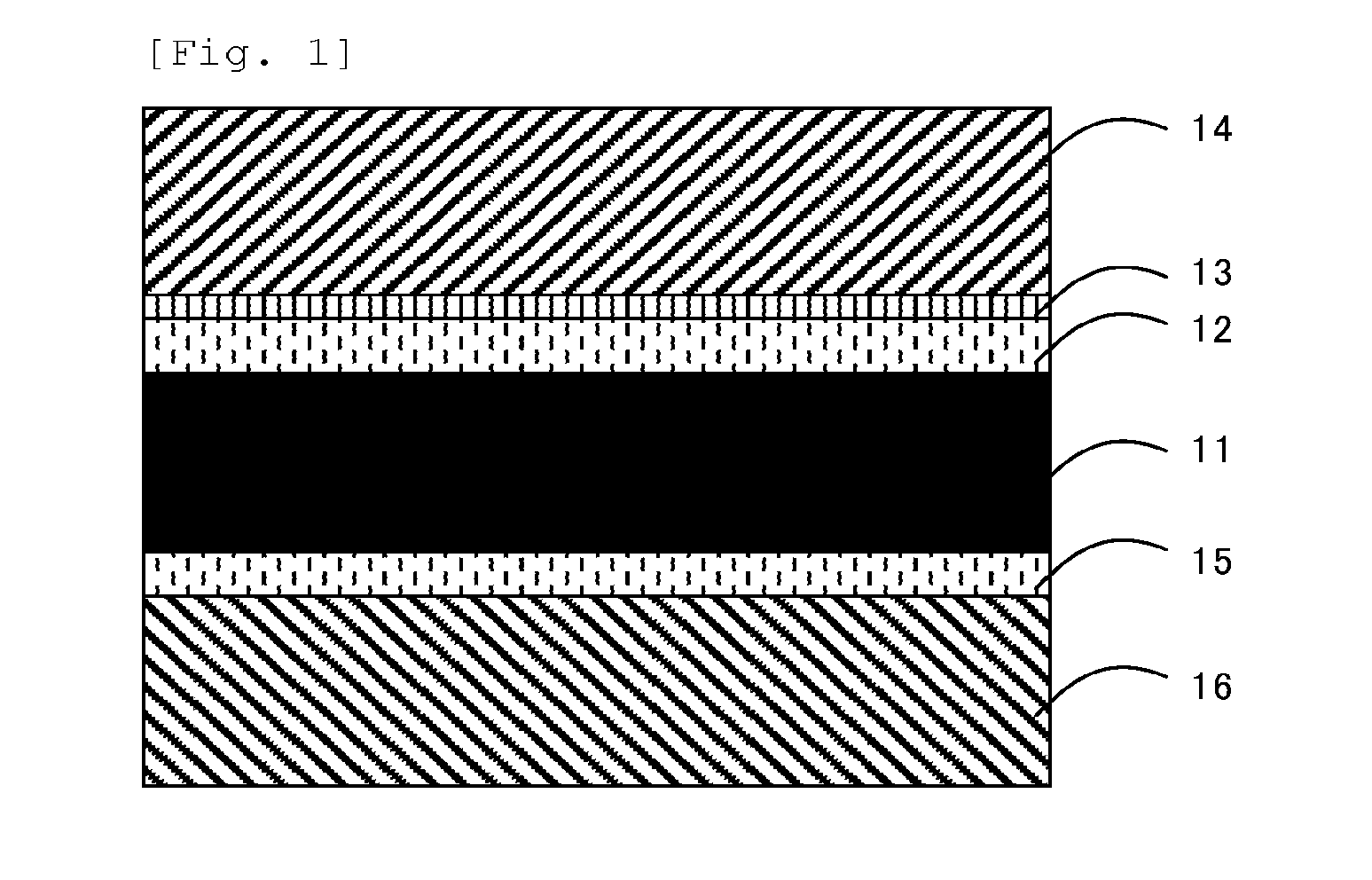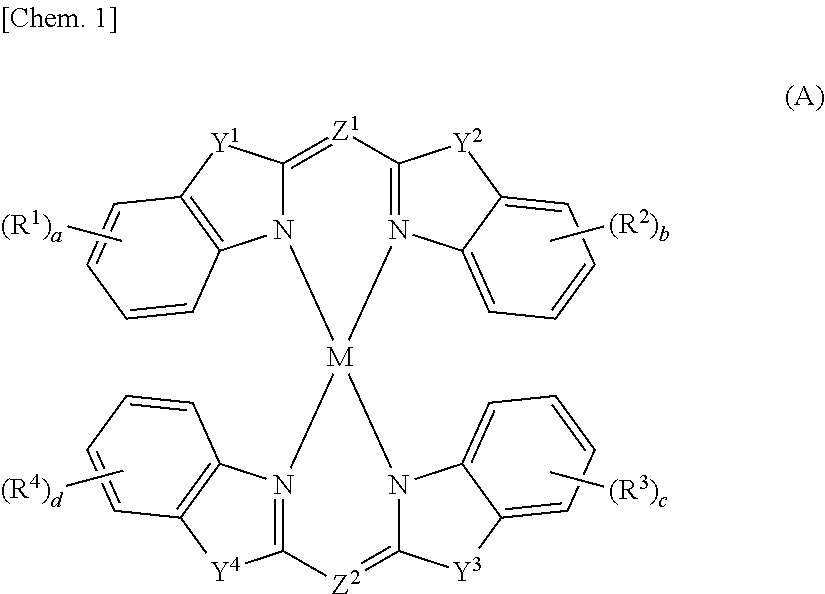Film
a technology of film and cellulose, applied in the field of film, can solve the problems of affecting the quality of polarizers, impairing the quality of ips liquid crystal displays, and affecting the quality of triacetylcellulose films
- Summary
- Abstract
- Description
- Claims
- Application Information
AI Technical Summary
Benefits of technology
Problems solved by technology
Method used
Image
Examples
production example 1
[0144]A 5-L glass reaction vessel equipped with a stirring blade and a three-way cock, after the interior being replaced with nitrogen, was fed at room temperature with 1600 g of toluene, 2.49 g (10.8 mmol) of 1,1,4,7,10,10-hexamethyltriethylenetetramine, 53.5 g (30.9 mmol) of a 0.45-M solution of isobutylbis(2,6-di-t-butyl-4-methylphenoxy)aluminum in toluene, and 6.17 g (10.3 mmol) of a 1.3-M sec-butyllithium solution (solvent: 95% by mass of cyclohexane and 5% by mass of n-hexane). Thereto with stirring at −20° C., 550 g of methy methacrylate purified by distillation was added dropwise over 30 minutes. After the completion of dropwise addition, stirring was performed at −20° C. for another 180 minutes. The color of the solution turned from yellow to colorless, at which point the conversion ratio of methyl methacrylate was 100%.
[0145]To the resulting solution, 1500 g of toluene was added for dilution. The diluted solution was then poured in 100 kg of methanol, and a precipitate was...
production example 2
[0146]A 5-L glass reaction vessel equipped with a stirring blade and a three-way cock, after the interior being replaced with nitrogen, was fed at room temperature with 1600 g of toluene, 2.49 g (10.8 mmol) of 1,1,4,7,10,10-hexamethyltriethylenetetramine, 53.5 g (30.9 mmol) of a 0.45-M solution of isobutylbis(2,6-di-t-butyl-4-methylphenoxy)aluminum in toluene, and 6.17 g (10.3 mmol) of a 1.3-M sec-butyllithium solution (solvent: 95% of cyclohexane and 5% of n-hexane). Thereto with stirring at 20° C., 550 g of methyl methacrylate purified by distillation was added dropwise over 30 minutes. After the completion of dropwise addition, stirring was performed at 20° C. for another 90 minutes. The color of the solution turned from yellow to colorless, at which point the polymerization conversion ratio of methyl methacrylate was 100%.
[0147]To the resulting solution, 1500 g of toluene was added for dilution. The diluted solution was then poured in 100 kg of methanol, and a precipitate was ob...
production example 3
[0148]An autoclave equipped with a stirrer and a sampling tube, the interior being replaced with nitrogen, and was fed with 100 parts by mass of purified methyl methacrylate, 0.0052 part by mass of 2,2′-azobis(2-methylpropionitrile) (hydrogen abstraction capacity: 1%, 1-hour half-life temperature: 83° C.), and 0.28 part by mass of n-octyl mercaptan, followed by stirring to give a liquid starting material. Into the resulting liquid starting material, nitrogen was introduced, for removing oxygen dissolved in the liquid starting material.
[0149]A tank reactor connected to the autoclave via piping was fed to its 2 / 3 capacity with the liquid starting material. With the temperature maintained at 140° C., a polymerization reaction was started in a batch mode first. When the polymerization conversion ratio reached 55% by mass, the liquid starting material was being fed from the autoclave into the tank reactor at a flow rate so that the mean residence time was 150 minutes, while the reaction ...
PUM
| Property | Measurement | Unit |
|---|---|---|
| MVR | aaaaa | aaaaa |
| thickness | aaaaa | aaaaa |
| melt flow rate | aaaaa | aaaaa |
Abstract
Description
Claims
Application Information
 Login to View More
Login to View More - R&D
- Intellectual Property
- Life Sciences
- Materials
- Tech Scout
- Unparalleled Data Quality
- Higher Quality Content
- 60% Fewer Hallucinations
Browse by: Latest US Patents, China's latest patents, Technical Efficacy Thesaurus, Application Domain, Technology Topic, Popular Technical Reports.
© 2025 PatSnap. All rights reserved.Legal|Privacy policy|Modern Slavery Act Transparency Statement|Sitemap|About US| Contact US: help@patsnap.com


